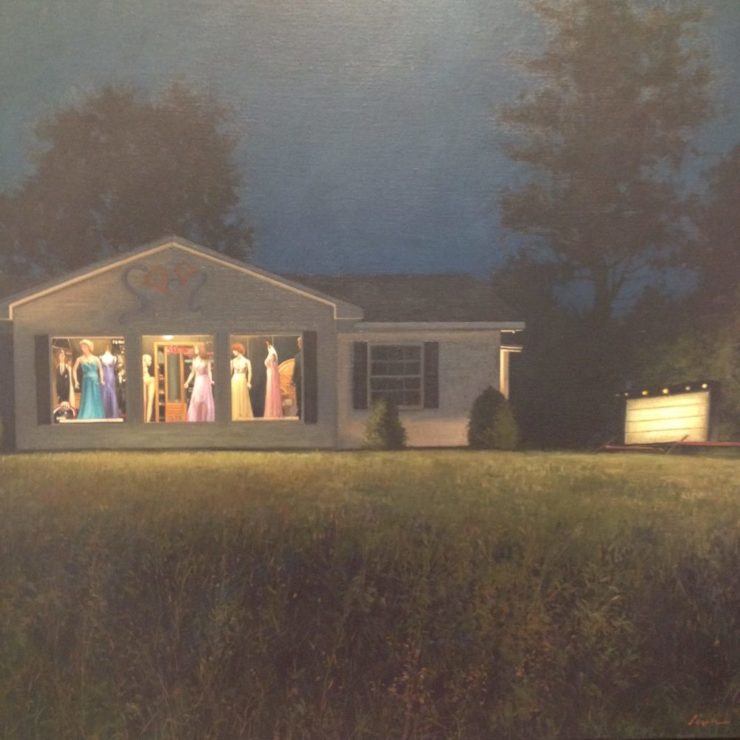
A close-up of "50 Percent," one of the paintings in artist Linden Frederick's "Night Stories" series, which are accompanied by stories inspired by the artworks.
It shouldn’t be surprising that storytelling was the focus this week on Storyboard: That’s what we do. But I love the variety of the storytelling on offer. A narrative about a recanted abuse allegation. A book connecting the fate of mussels to the fate of all of us. A remarkable feat of reporting on the opioid epidemic. A song about British beach holidays. And a series of voyeuristic night paintings that inspired a series of short stories.
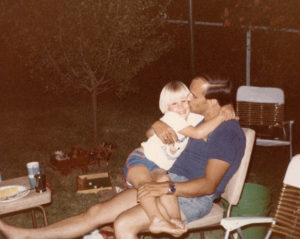
Matt Spencer, age six, visiting his father in Washington state in 1982.
The Marshall Project’s Maurice Chammah and “The Accusation.” Chammah talked to regular Storyboard contributor Katia Savchuk about his piece on a recanted sexual abuse allegation, published jointly with Esquire. It’s great to spotlight the work of one of the newer journalism outlets, The Marshall Project, a small nonprofit that focuses on the U.S. judicial system. Chammah says of his work: “I love finding cases that force you to question your assumptions about the best way to achieve ‘justice,’ and what that word even means.”
The soundtrack: “I Stand Accused,” by Isaac Hayes. OK, if the father had actually been guilty, this would have been a very creepy soundtrack for the story. But he spent years in prison for something he didn’t do, so I think it has resonance and pathos. Plus, one of the best voices ever. And the backup singers are great too. “Guilty! I stand accused,” they sing.
One Great Sentence
“If the history of the earth’s tides should one day be written by some observer of the universe, it would no doubt be said that they reached their greatest grandeur and power in the younger days of Earth, and that they slowly grew feebler and less imposing until one day they ceased to be.”
Rachel Carson, “The Sea Around Us.” Read why we think it’s great.
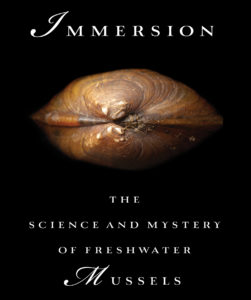 Abbie Gascho Landis and the surprising climate book “Immersion.” I really like contributor Olga Kreimer’s summation of this book about mussels and climate change, not a topic we might be inclined to read about: “The book is about mussels, of course, but also about everything they’re connected to, which is to say: everything.” And this quote from Landis is good too: “Mussels are a hard sell in some way. They’re animals, but they kind of appear inanimate. They look like rocks. To most of us, they’re invisible, and who even heard of them? I felt that one of the most powerful ways to connect to mussels is to see how they’re connected to us and our stories.”
Abbie Gascho Landis and the surprising climate book “Immersion.” I really like contributor Olga Kreimer’s summation of this book about mussels and climate change, not a topic we might be inclined to read about: “The book is about mussels, of course, but also about everything they’re connected to, which is to say: everything.” And this quote from Landis is good too: “Mussels are a hard sell in some way. They’re animals, but they kind of appear inanimate. They look like rocks. To most of us, they’re invisible, and who even heard of them? I felt that one of the most powerful ways to connect to mussels is to see how they’re connected to us and our stories.”
The soundtrack: “Pulling Mussels (From the Shell),” by Squeeze. Squeeze knew how to write perfect pop. And this song is perfect storytelling too, about a British beach holiday. The elliptical scenes are so evocative: “Squinting faces at the sky/A Harold Robbins paperback/Surfers drop their boards and dry/And everybody wants a hat.”
What I’m reading online: “Seven Days of Heroin: This Is What an Epidemic Looks Like,” by Dan Horn and Terry DeMiothe, and dozens of other members of the Cincinnati Enquirer staff. We’re planning a deeper look at this magnificent piece of reporting and storytelling soon on Storyboard. But I didn’t want to wait to point it out to readers. One of the most impressive feats this year, from concept to reporting to execution.
“The Risk of Nuclear War With North Korea,” by Evan Osnos. I’m not sure I would have picked this headline, because it doesn’t capture the full lunacy and sweep of Osnos’ visit to Pyongyang, the North Korean capital. (Such visits are relatively rare.) I’ll give you this passage, as a taste of this wonderful piece: “The mentions of war and weaponry were everywhere: on television, on billboards, in the talk of well-rehearsed schoolchildren. When I attended a show at Pyongyang’s Rungna Dolphinarium, in which dolphins flipped and jumped and performed tricks, the finale featured a video montage that included the image of a missile soaring across the sky. I asked Pak what connected dolphins with missiles. He said, ‘It’s inspiring to the people. We’re going to have everything we want. A dolphinarium. Nuclear weapons. One by one.’”
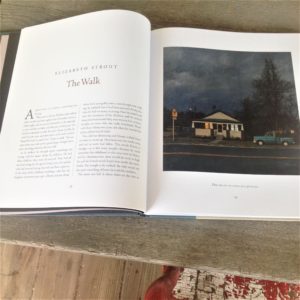 What’s on my bedside table: “Night Stories,” by Linden Frederick. I’m not sure I can restrain myself to a brief blurb about this book; I may yet do a full post about it, even if the storytelling involved is fiction. It’s that amazing. But for now: I went to the exhibit this week, which is a series of 15 paintings by Frederick that are very Hopperesque (in the best way possible). But the truly cool thing is that he got 15 of America’s best writers to create stories inspired by the paintings. This book is the result. Stunning. (My favorite story so far is by Elizabeth Strout.)
What’s on my bedside table: “Night Stories,” by Linden Frederick. I’m not sure I can restrain myself to a brief blurb about this book; I may yet do a full post about it, even if the storytelling involved is fiction. It’s that amazing. But for now: I went to the exhibit this week, which is a series of 15 paintings by Frederick that are very Hopperesque (in the best way possible). But the truly cool thing is that he got 15 of America’s best writers to create stories inspired by the paintings. This book is the result. Stunning. (My favorite story so far is by Elizabeth Strout.)
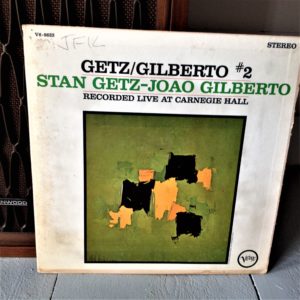 What’s on my turntable: “Getz/Gilberto #2,” by Stan Getz and Joao Gilberto. Everything about this is great: the performances, the cover, the liner notes. My favorite thing about the last one is a good lesson for Storyboard. It’s the section on Getz, and it opens with an anecdote about British experts talking to some Japanese artists in the early part of the last century. “What is the most difficult part of a painting?” they asked the artists. “Deciding what to leave out,” was the answer.
What’s on my turntable: “Getz/Gilberto #2,” by Stan Getz and Joao Gilberto. Everything about this is great: the performances, the cover, the liner notes. My favorite thing about the last one is a good lesson for Storyboard. It’s the section on Getz, and it opens with an anecdote about British experts talking to some Japanese artists in the early part of the last century. “What is the most difficult part of a painting?” they asked the artists. “Deciding what to leave out,” was the answer.
If you want to chat about storytelling (or music), I’m Storyboard editor Kari Howard, and you can reach me at editor@niemanstoryboard.org. Or you can find me at @karihow on Twitter.


